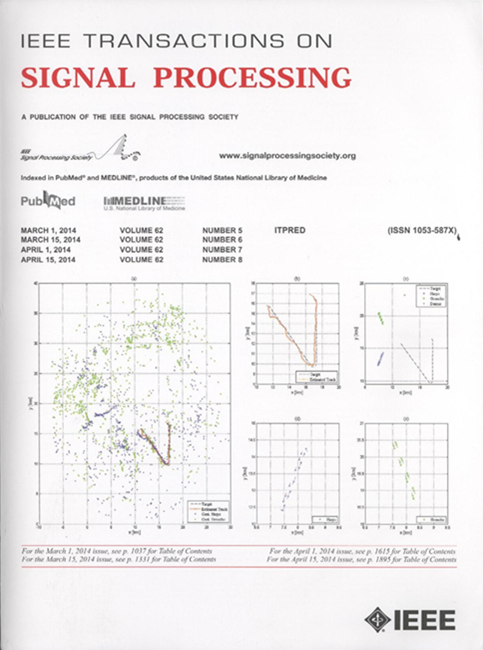基于过松弛admm的叶级约束统一自适应波束形成方案
IF 5.8
2区 工程技术
Q1 ENGINEERING, ELECTRICAL & ELECTRONIC
引用次数: 0
摘要
在高动态环境下,由于目标和干扰的到达方向会发生快速变化,自适应波束形成的性能会急剧下降。为了解决这个问题,我们建议在设计问题中引入额外的主瓣级和副瓣级约束,目的是拓宽主瓣和波束方向图的零点。然而,非凸约束优化问题的求解具有较高的计算复杂度。为了简化这一问题,我们提出将复值非凸约束优化问题通过适用于中心对称阵列(CSA)的幺正变换转化为实值凸约束优化问题。然后,将该问题分解为多个无约束优化子问题,使用标准乘法器交替方向法(S-ADMM)迭代求解。为了进一步提高收敛速度,我们利用松弛原理开发了一种超松弛ADMM (OR-ADMM)。数值仿真结果表明,该方法在高动态环境下具有较好的鲁棒性和较快的收敛速度。本文章由计算机程序翻译,如有差异,请以英文原文为准。
Over-Relaxed ADMM-Based Unitary Adaptive Beamforming Scheme With Lobe-Level Constraints
The performance of adaptive beamforming may degrade dramatically in a highly dynamic environment, because the directions of arrival (DOAs) of targets and interferences can change rapidly. To address this problem, we propose here to introduce additional mainlobe-level and sidelobe-level constraints in the design problem, with the goal to broaden the mainlobe and the nulls of the beampattern. However, the solution of the resulting optimization problem with non-convex constraints has high computational complexity. To reduce it, we propose to transform the complex-valued non-convex constrained optimization problem into a real-valued convex constrained one by performing a unitary transformation, which is suitable for centro-symmetric arrays (CSA). Then, the problem is decomposed into multiple unconstrained optimization sub-problems that can be solved iteratively using the standard alternating direction method of multipliers (S-ADMM) method. To improve further the convergence speed, we then develop an over-relaxed ADMM (OR-ADMM) by exploiting the principle of relaxation. Numerical simulation demonstrates the robustness and the convergence speed improvements of the proposed OR-ADMM in a highly dynamic environment.
求助全文
通过发布文献求助,成功后即可免费获取论文全文。
去求助
来源期刊

IEEE Transactions on Signal Processing
工程技术-工程:电子与电气
CiteScore
11.20
自引率
9.30%
发文量
310
审稿时长
3.0 months
期刊介绍:
The IEEE Transactions on Signal Processing covers novel theory, algorithms, performance analyses and applications of techniques for the processing, understanding, learning, retrieval, mining, and extraction of information from signals. The term “signal” includes, among others, audio, video, speech, image, communication, geophysical, sonar, radar, medical and musical signals. Examples of topics of interest include, but are not limited to, information processing and the theory and application of filtering, coding, transmitting, estimating, detecting, analyzing, recognizing, synthesizing, recording, and reproducing signals.
 求助内容:
求助内容: 应助结果提醒方式:
应助结果提醒方式:


